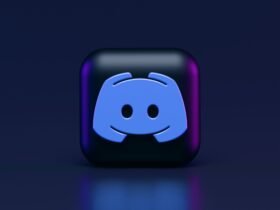Introduction to ChatGPT
What is ChatGPT?
ChatGPT is an advanced AI language model developed by OpenAI. It is designed to engage in interactive and dynamic conversations with users. Built upon the foundation of GPT (Generative Pre-trained Transformer), ChatGPT takes conversational AI to a new level by providing human-like responses, making it an exciting innovation in the field of natural language processing.
With its ability to generate contextually relevant and coherent responses, ChatGPT opens up a wide range of possibilities for various applications, including customer service, personal assistants, and educational tools. It utilizes a vast amount of training data to learn patterns in language and generate meaningful responses to user queries.
Evolution of ChatGPT
ChatGPT is the result of continuous advancements in the field of AI language models. It is built upon the success of its predecessor, GPT-3, which gained significant attention for its impressive language generation capabilities. GPT-3 demonstrated the potential of AI in understanding and generating human-like text.
The development of ChatGPT represents a significant step forward in the evolution of conversational AI. OpenAI has fine-tuned the underlying model and trained it using a variety of data sources, including books, articles, and websites. This extensive training allows ChatGPT to learn from diverse contexts, improving its ability to generate coherent and contextually relevant responses.
OpenAI continues to refine and expand the capabilities of ChatGPT through ongoing research and development. The goal is to create an AI language model that can engage in meaningful and valuable conversations, enabling users to interact with AI systems in a more natural and intuitive way.
To learn more about how to use ChatGPT effectively, you can refer to our ChatGPT tutorial. Additionally, if you’re interested in exploring the diverse applications of ChatGPT, check out our article on ChatGPT use cases.
The introduction of ChatGPT marks an exciting milestone in AI technology, paving the way for more advanced and interactive conversational experiences. With its remarkable language understanding and generation capabilities, ChatGPT has the potential to revolutionize the way we interact with AI systems and reshape the future of communication.
Applications of ChatGPT
As the capabilities of ChatGPT continue to advance, its potential for various applications becomes evident. Let’s explore some of the key areas where ChatGPT can be utilized effectively.
Customer Service
One of the most promising applications of ChatGPT is in the field of customer service. Traditional customer support systems often rely on pre-written scripts or a limited set of responses. However, with ChatGPT, businesses can provide more personalized and interactive customer experiences.
By leveraging the natural language understanding capabilities of ChatGPT, customer service agents can engage in dynamic conversations, addressing customer queries and concerns more effectively. ChatGPT can provide real-time assistance, offer product recommendations, and guide customers through troubleshooting processes. This not only enhances customer satisfaction but also reduces the workload on human agents, allowing them to focus on more complex issues. For an in-depth tutorial on ChatGPT, check out our article on chatgpt tutorial.
Personal Assistants
ChatGPT also holds great potential as a personal assistant, capable of handling a wide range of tasks and inquiries. Whether it’s managing schedules, setting reminders, or providing general information, ChatGPT can assist users in their day-to-day activities.
By understanding and responding to natural language queries, ChatGPT can simulate human-like interactions, making the experience more conversational and intuitive. It can adapt to individual preferences and learn from past interactions, offering personalized recommendations and suggestions. As technology continues to evolve, ChatGPT has the potential to become an indispensable companion for users seeking assistance throughout their daily routines. For more information on the use cases of ChatGPT, visit our article on chatgpt use cases.
Educational Tools
In the realm of education, ChatGPT can serve as a valuable tool for both students and teachers. It can provide instant answers to questions, offer explanations on complex concepts, and engage in interactive learning experiences.
By integrating ChatGPT into educational platforms, students can receive personalized tutoring, guidance, and feedback. ChatGPT can adapt to different learning styles, catering to the individual needs of students. It can also assist teachers by automating routine tasks, such as grading assignments or providing additional resources to support classroom instruction. To learn more about the training data used for ChatGPT, refer to our article on chatgpt training data.
The potential applications of ChatGPT extend far beyond customer service, personal assistance, and education. As the technology continues to evolve, we can expect to see ChatGPT being integrated into various platforms and industries, transforming the way we interact with AI systems. The future holds exciting possibilities for enhanced capabilities and widespread adoption of ChatGPT. For a comprehensive explanation of ChatGPT, read our article on chatgpt explained.
Advantages of ChatGPT
As an advanced language model, ChatGPT offers several advantages that make it a powerful tool for various applications. Let’s explore two key advantages of ChatGPT: natural conversations and language understanding.
Natural Conversations
ChatGPT is designed to engage in natural conversations, making interactions with the model feel more human-like. It has the ability to generate responses that are contextually relevant and coherent, allowing for more fluid and meaningful conversations.
The model has been trained on a vast amount of diverse data, enabling it to understand and respond to a wide range of user inputs. Whether it’s answering questions, providing information, or engaging in casual conversation, ChatGPT strives to provide responses that align with the user’s intentions.
It is important to note that while ChatGPT excels at generating text that resembles human conversation, it may occasionally produce responses that are incorrect, nonsensical, or biased. Efforts are continuously made to improve the model’s performance and address these limitations.
Language Understanding
Another advantage of ChatGPT is its strong language understanding capabilities. The model has been trained on a vast corpus of text, enabling it to grasp the nuances of language and comprehend a wide range of topics and queries.
ChatGPT can effectively handle a variety of inputs, including questions, prompts, and requests for information. It can provide informative and relevant responses based on the input it receives. This language understanding ability allows ChatGPT to be versatile in different applications, such as customer service, personal assistants, and educational tools.
However, it is important to note that ChatGPT’s language understanding is based on patterns and information present in its training data. It may not possess real-world knowledge beyond what it has learned from the training data. As a result, it may sometimes provide answers that are plausible-sounding but factually incorrect. It is always advisable to verify information from reliable and authoritative sources.
By leveraging its natural conversation capabilities and language understanding, ChatGPT brings forth exciting possibilities in various domains. As the model continues to evolve and improve, it holds promise for enhancing communication and interaction between humans and AI systems.
For a comprehensive tutorial on how to use ChatGPT, check out our chatgpt tutorial. To explore different applications and use cases of ChatGPT, visit our article on chatgpt use cases. To learn more about the training data used for ChatGPT, refer to our article on chatgpt training data. For a deeper understanding of the model itself, take a look at our chatgpt explained article.
Future Trends with ChatGPT
As ChatGPT continues to make waves in the field of AI-driven conversational agents, the future holds exciting possibilities for its integration and enhanced capabilities.
Integration with Various Platforms
One of the key future trends for ChatGPT is its integration with various platforms. The goal is to seamlessly incorporate ChatGPT into existing systems and applications, enabling users to interact with the model across different interfaces. Whether it’s through chatbots on websites, messaging apps, or voice assistants, the integration of ChatGPT can revolutionize the way we interact with AI-powered conversational agents.
By integrating ChatGPT into customer support systems, businesses can provide efficient and personalized customer service. Users can have their queries answered in a conversational manner, enhancing the overall customer experience. Additionally, integrating ChatGPT into personal assistants can enable users to perform a wide range of tasks, from scheduling appointments to getting personalized recommendations.
Enhanced Capabilities
As ChatGPT evolves, we can expect to see enhanced capabilities that further improve its performance and usefulness. Ongoing research and development efforts aim to address the limitations and challenges faced by ChatGPT, such as generating more accurate and contextually appropriate responses.
One area of focus is improving the model’s language understanding and contextual awareness. This involves training ChatGPT on larger and more diverse datasets, incorporating more nuanced linguistic patterns and context-specific knowledge. By enhancing its ability to grasp the nuances of human language, ChatGPT can provide more accurate and relevant responses in a wide range of conversational scenarios.
Another aspect of future development involves refining the model’s response generation. This includes reducing instances of generating incorrect or nonsensical answers and ensuring that the model can handle ambiguous queries or requests with more clarity. Improving the response quality and coherence of ChatGPT will contribute to a more natural and engaging conversation.
As ChatGPT progresses, it’s important to remember that ongoing research and development efforts are continually pushing the boundaries of what AI-powered conversational agents can achieve. To learn more about ChatGPT, its applications, and how it works, check out our ChatGPT explained article.













Got a Questions?
Find us on Socials or Contact us and we’ll get back to you as soon as possible.